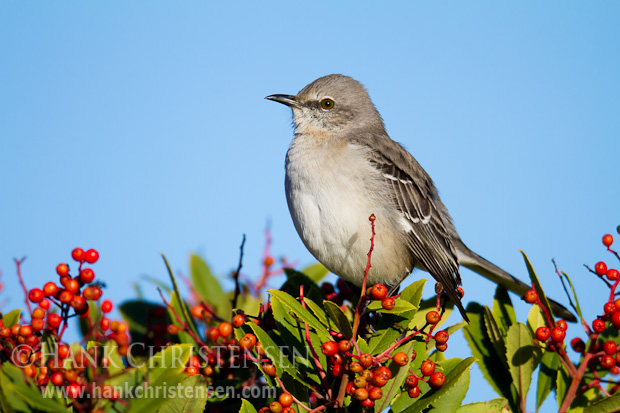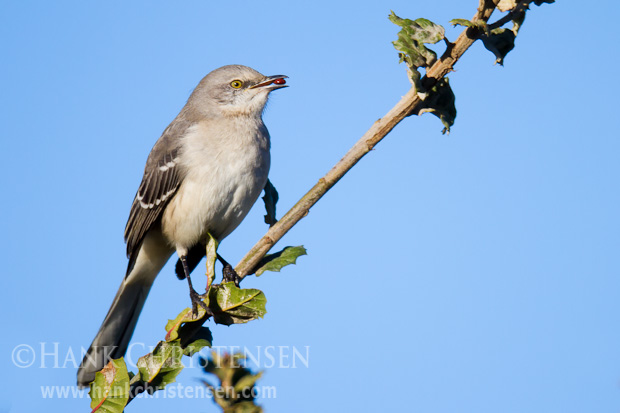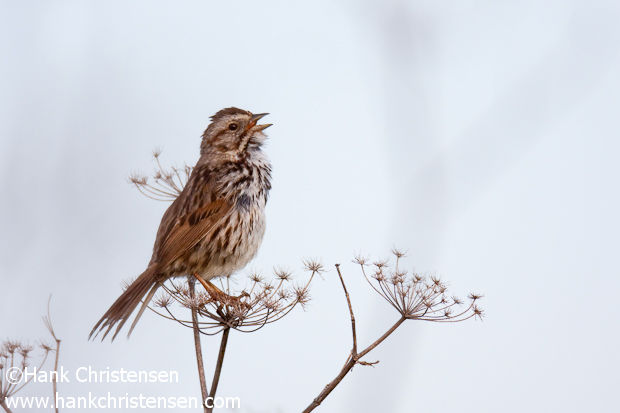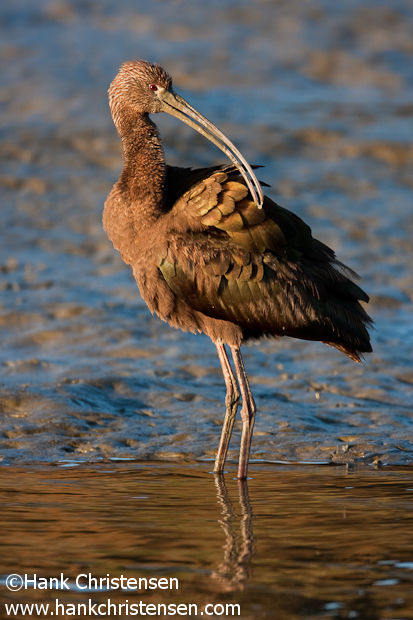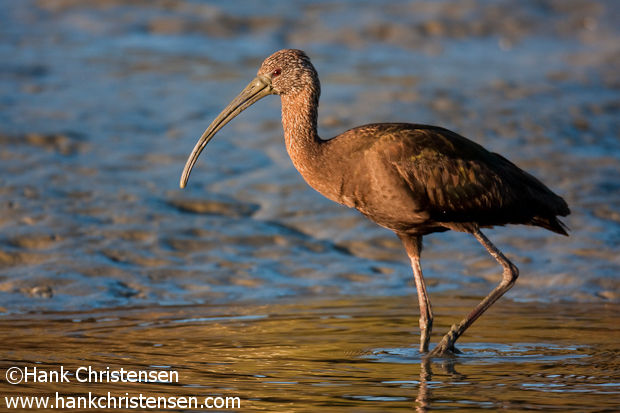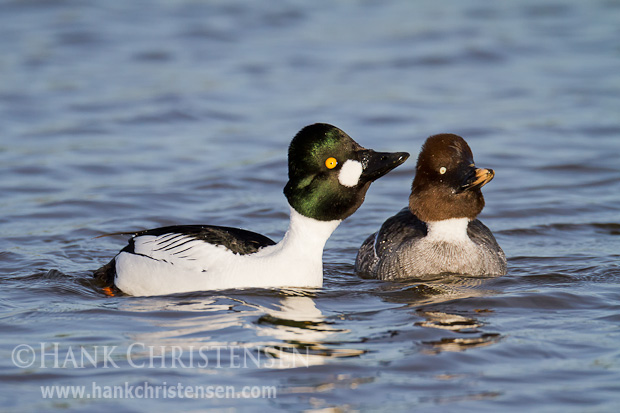
Spring is almost here, and with it comes the showmanship and fortitude of male birds courting their females. Especially fun to watch are the common goldeneyes, with their neck stretches, head throws and incessant quacking – all in the pursuit of charming that special someone who, if the performance is good enough, might return the affection. I took all the shots seen here recently at Shoreline Lake in Mountain View, where a multitude of common goldeneye can be seen putting on their show. If you live nearby, I definitely recommend a trip there either in the early morning or late afternoon, when the birds are most active.
The common goldeneye courtship display consists of several different maneuvers. The most common move seems to be the neck stretch, which can be seen in the photo above, and the photo immediately following.
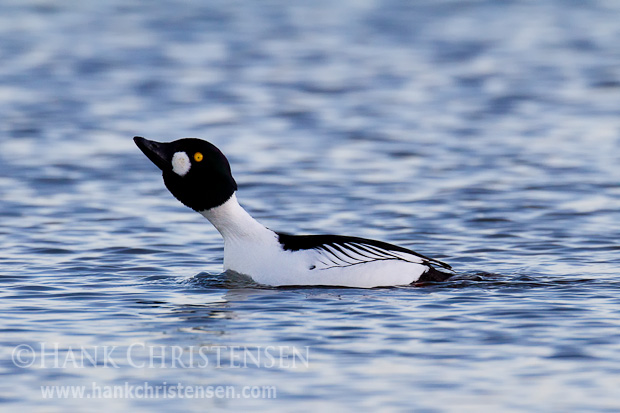
If he wants to get a little flashier, he shoots his head straight up with a long neck and lets out a loud quack. Sometimes this first and second move are done in sequence, with the bird first poking his head out in front, and with the neck extended, swiveling it straight up to quack. This usually gets the ladies attention.
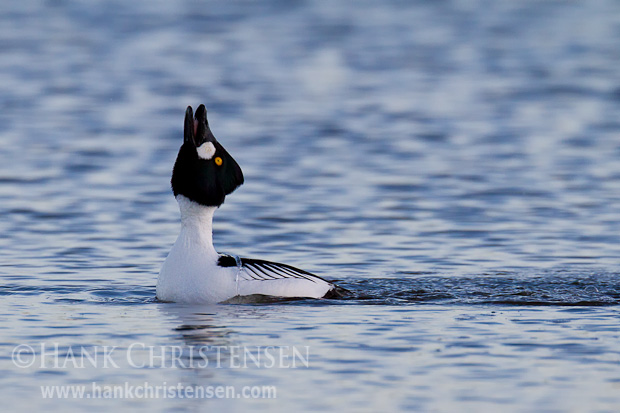
If that doesn’t quite do it, or the goldeneye is feeling particularly frisky, he pulls out the head tuck move. Here he folds himself backward in half, touches his head to his back and lets out a kind of double-quack. It seems as though the first quack actually comes in normal position, followed the the quick head throw and second quack up into the air. This second sound is louder and more drawn out than the first, kind of like putting the accent on the second syllable of a two-syllable word.
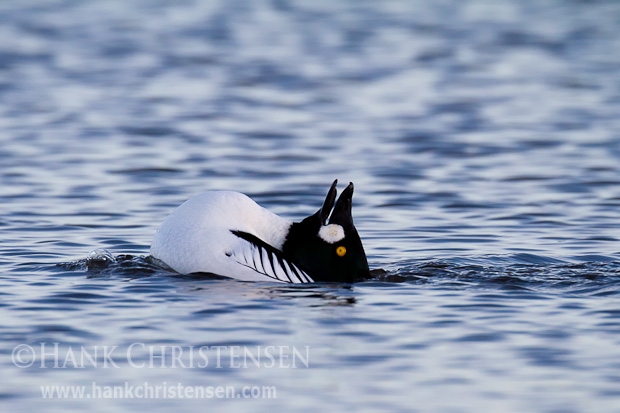
Finally, if nothing else is working, the goldeneye busts out the uber-display. After performing the double-quack with his head tucked against his back, he forcefully kicks both feet backward, splashing water high into the air. I only saw this display a few times by only two birds – each of the other displays were more common.
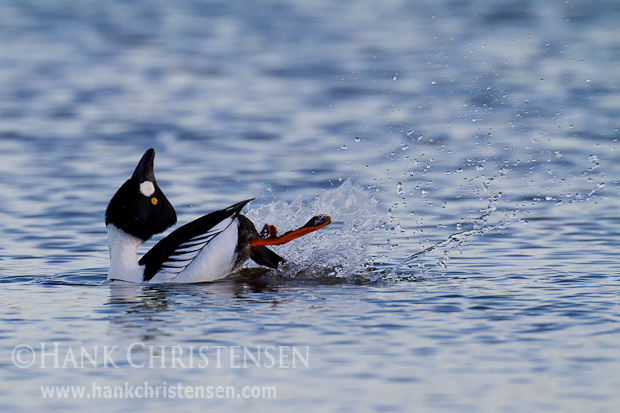
If all goes well, he finally attracts his mate, who shows the love by mirroring some of his moves. In the following photo, the male is being followed by an interested female.
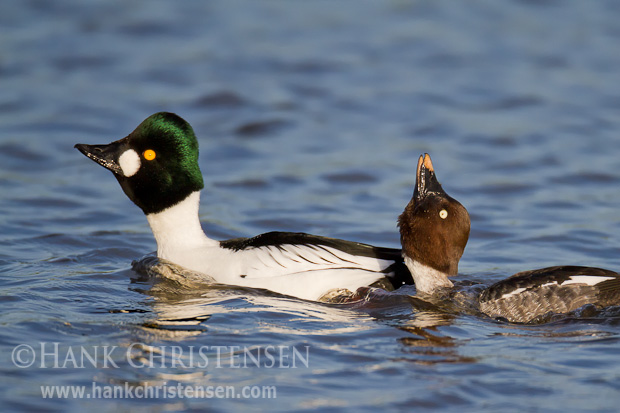
Courtship displays of different avian species can be fascinating to watch, and can get quite elaborate. Personally, I think I’ll stick to chocolate and flowers!

